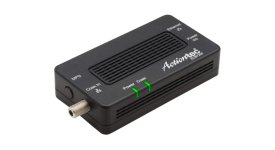Randy Myers
Well-known member
Re: How to Troubleshoot a High-End Audio Ethernet Netwok
The KISS principle is always best to follow. I do not want my digital signal going through my network. Routers, switches, etc., etc. can damage the digital signal more than any particular output; ethernet, USB, optical, etc. I connect straight out of my server machine to my DAC using USB since this is the best way of getting DSD512 native to my DAC. It has always worked 100%. I do not recall ever having an issue getting my signal to my DAC and therefore to my pre-amp.
It amazes me how much effort people who love streaming networks put into their modems, routers, switches, ethernet cables, etc., when they have no control over the thousands of miles the signal travels through, hundreds of routers and switches, etc., that are far worse than anything in their home. How much of a difference could that last steps within their home actually affect their final signal?
The KISS principle is always best to follow. I do not want my digital signal going through my network. Routers, switches, etc., etc. can damage the digital signal more than any particular output; ethernet, USB, optical, etc. I connect straight out of my server machine to my DAC using USB since this is the best way of getting DSD512 native to my DAC. It has always worked 100%. I do not recall ever having an issue getting my signal to my DAC and therefore to my pre-amp.
It amazes me how much effort people who love streaming networks put into their modems, routers, switches, ethernet cables, etc., when they have no control over the thousands of miles the signal travels through, hundreds of routers and switches, etc., that are far worse than anything in their home. How much of a difference could that last steps within their home actually affect their final signal?

